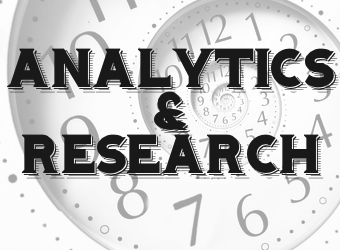2011 forecast series… Analytics and research
Share

In the lead up to July’s release of Marketing magazine’s annual publication for 2012, The Marketing Survival Guide, we’re winding back the clock to the start of last year and sharing the ‘Industry leader’ columns from 2011’s Digital Survival Guide to see just how much has changed, what has stayed the same, and generally what life was like over a year ago across eight areas of digital marketing, continuing today with ‘Analytics and research’.
2 February 2011 – In the brave new world of market research, clients are more demanding than ever, as they face the ever-present challenge of increasing competition and stretched budgets, and look to spread their marketing spend across a broadening array of media platforms.
Of course, at the heart of it all is the consumer. In this new world, we are witnessing considerable shifts in consumer patterns, and these shifts are centred on a couple of key themes:
Diversity and globalisation
Australia’s population is more diverse than ever. Significant changes in the ethnic and demographic make-up of the population are resulting in changing shopping habits and so, more than ever, companies need to consider how they can more adequately target their consumers. Australia’s increasing diversity
is also being driven by broadening access to products and services. Global borders are disappearing as knowledgeable and informed consumers demand access to products and services anytime, anywhere and at a competitive price. If it isn’t available in their location, there’s an online retailer ready to supply it, be they domestic or foreign.
Demand
Global economies have shifted from supply- driven to demand-driven. While for centuries global economies have enjoyed relative balance between supply and demand, the scales have tipped, and supply is no longer outstripping the demand available to absorb it. In How Companies Win: Profiting from Demand-Driven Business Models No Matter What Business You’re In, a recent book co-written by Nielsen’s CEO, Dave Calhoun, and Rick Kash, head of The Cambridge Group, the authors emphasise that, for companies, demand is ultimately about profit – whoever satisfies demand the best, profits the most.
Connectivity
Media consumption is changing as the lines blur between the content available on television, print, radio and online. The growing popularity of portable connected devices is breaking down the barriers between how media is seen and how it is created. Media content is more readily accessible and consumers are rapidly adapting to anywhere, anytime access. In addition, the advent of social media and consumer generated content means consumers now wield more power than ever. For the research sector, these trends provide myriad challenges and, more importantly, they represent exciting opportunities. Central to these challenges and opportunities is the ability of researchers to help their clients understand and leverage these new realities in order to gain competitive advantage. As new technologies enable a seamless view across languages and ethnic/generational groups linked to purchase and usage behaviour, traditional marketing practices of mass marketing or age/gender targeted marketing outreach activities is in decline, making way for marketing focused on consumer individuality and a new set of segmentation rules, drawing on specialised research in areas such as psychographics, neuroscience and mass customisation.
Here are just a few of the key themes for the research sector over the past year, and for the year ahead:
Data integration
Technological advances in research methodology over recent years have made true data integration a reality. Date integration, or fusing of data, means that researchers are now able to tie together the complete consumer picture, linking insights on what consumers watch, read, see or listen to with what they buy – essentially, a multidimensional view of how advertising and media content is influencing purchasing habits.
Evolving technology
Technology is moving at such a rate that the possibilities for researchers are endless. The simple research questionnaire, while unlikely to be replaced, is now being augmented with in-depth insights into how people react and behave and how certain stimuli affect purchasing decisions.
Neuroscience
Although a pioneering technology, cutting edge neuroscience techniques that analyse brainwave activity are providing a unique view of how consumers react to stimuli at the deep subconscious level, providing information that has eluded researchers for many years.
Actionable insights
In a growing competitive landscape, clients are no longer satisfied with ‘data dumping’. They want researchers to be insight-driven, and these insights need to be focused on enabling quick action to help companies stay one step ahead of their competition.
In the year ahead, the research sector faces some of the most exciting developments in recent history.
Driven by an expanding array of technological capabilities, the key to unlocking consumer insights lies in understanding clients’ businesses, and delivering world-class data, insight and foresight to help them to develop successful marketing strategies and fuel business growth.















